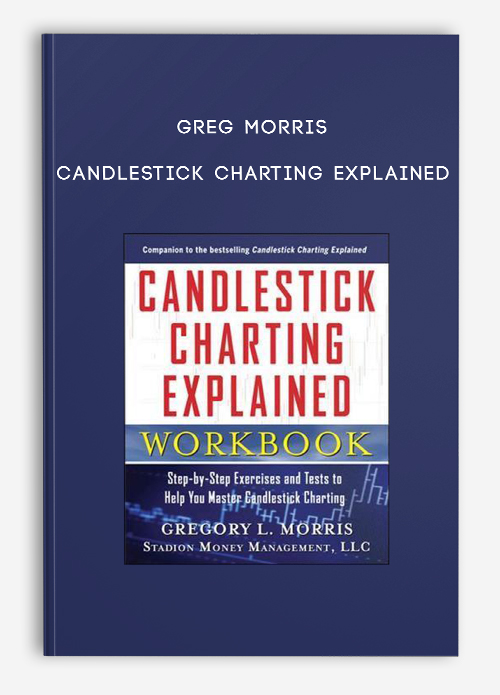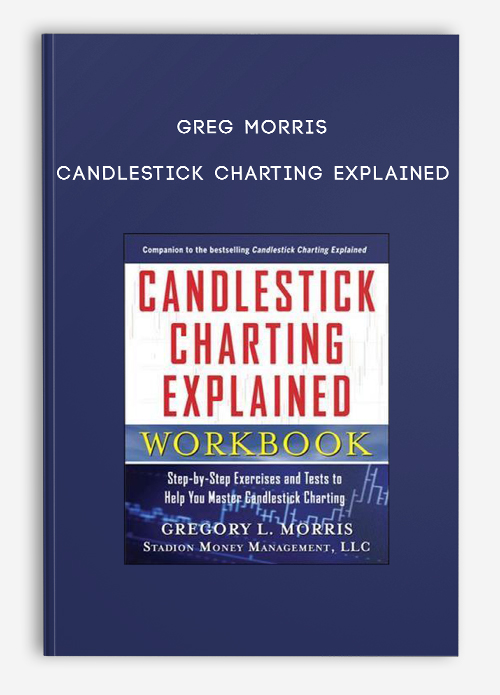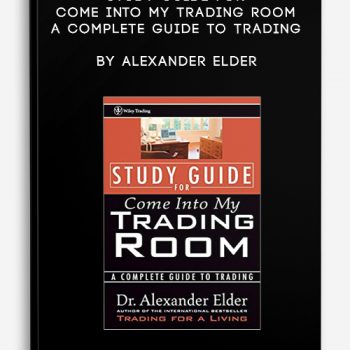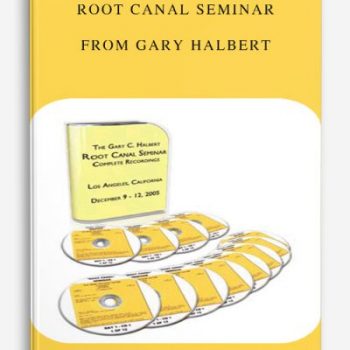
Candlestick Charting Explained by Greg Morris
Want to learn about Forex?
Foreign exchange, or forex, is the conversion of one country’s currency into another.
In a free economy, a country’s currency is valued according to the laws of supply and demand.
In other words, a currency’s value can be pegged to another country’s currency, such as the U.S. dollar, or even to a basket of currencies.
A country’s currency value may also be set by the country’s government.
However, most countries float their currencies freely against those of other countries, which keeps them in constant fluctuation.
Description
Candlesticks are everywhere now. Twenty years ago, they were non-existent. They have taken over all of the major trading and charting services and applications.
Candlesticks have four simple data points:
- The Open
- The Close
- The High
- The Low
There is a ton of information contained within those 4 bits of info.
This visual representation of those 4 data points has been in use in Japan, going back hundreds of years, unknown to the western world. It is widely recognized that this changed through the work of Steve Nison, with his book that came out in 1991 called Japanese Candlestick Charting Techniques. Here he described and named individual candlesticks (one day) and candlestick patterns (multi-day) that are still in use today.
Greg Morris built upon Nison’s work with his book, Candlestick Charting Explained. In my opinion, this is the best single book that will make a difference in your trading.
There are a few primary reason’s why I think this is the case, listed below.
I’ll explain further on each, but here are my 3 key takeaways from the book:
- There aren’t any “good ones”: What he means here, is exactly that…there is not one candlestick pattern that is the holy grail to trading riches.
- Location, location, location: Just like the old adage in real-estate, the location of WHERE the candlestick pattern occurs is more important than just the pattern itself.
- Filtering candlesticks with indicators: When you combine candlestick patterns with technical indicators, the trading performance is greatly enhanced than when using the patterns on their own.
Ok, let me first quickly break down the contents of the book so you can get a feel of what you are getting (and it’s a lot!) in the 496 pages (I have the 3rd edition).
Chapter 1 is a basic introduction about how candlesticks enhance the old western bar charts. Chapter 2, Candlestick Lines quickly covers the 15 basic candlestick lines that form the basis of candlestick analysis, such as “short days”, which are small, stubby candles with not too much of a difference between the highs and lows and “long days”, a huge, tall candle.
After that he jumps right into the analysis of TONS of candlestick patterns. This starts on page 21 in Chapter 3, Reversal Candle Patterns and ends with Chapter 4, Continuation Patterns, at page 280! Basically, you’ve got 260 pages of analysis of each candlestick pattern to study.
A quick word about those two terms for those unfamiliar:
- A reversal candlestick patterns are just that, a reversal of a previous trend.
- A continuation candlestick pattern is just that, confirmation that an existing trend will continue.
Here Greg Morris emphasizes something that is often forgotten, but so basic. To have a reversal candlestick pattern (either up or down), you have to look at the previous trend! After all, how can you have a reversal if there is nothing to reverse from! To have a continuation candlestick pattern (either up or down), the pattern has to occur within the trend.
A bullish positive candlestick reversal HAS to take place after a downtrend. A bearish negative candlestick reversal HAS to take place after a uptrend. This is so basic, but I’ve seen tons of examples online where people talk about a pattern, but they forget about looking at the previous trend!
How does Greg Morris determine the trend?
By looking at the 10 day Exponential Moving Average (EMA). You can’t have a bullish positive reversal pattern if a stock is above the 10 day EMA. You can’t have a bearish negative reversal pattern if a stock is below the 10 day EMA.
Once he has that defined, he proceeds to outline each candlestick pattern. Here is what is so cool about that. He has analyzed tons of prior trading history of common stocks and then tabulates and reports the results from each.
Specifically, for all of the patterns he has looked at 7,275 common stocks with over 14.6 million days of data.”
Each pattern is broken down with the following detail within an easy to read table that contains:
- Pattern Name
- Pattern Type
- Japanese Name
- Trend required
- Confirmation required
- Frequency – how often does this pattern occur (because some are very rare)
- Interval (days) – what was the performance over then next 7 days, with statistics of performance after 1, 2, 3, 4, 5, 6, 7 days. Each day is a column and under each column is the following set of rows:
- % Winners – the win rate
- Average % Gain
- % Losers
- Average % Loss
- Net Profit / Net Loss
There you have it, the next 260 pages, with the table for each candlestick pattern, then a commentary on each one, along with the rules of recognition and the psychology and scenario behind each pattern!
You can really get lost in this section…I loved it.
A few of my key takeaways. Looking through all of the candlestick patterns, it is apparent that the percentage win rate is very low. On some patterns, the win rate is actually negative!
Take the hammer for instance (pg. 27). Yes, the hammer, one of the perennial favorites and one of the “good ones” Across all occurrences analyzed when it appeared, what do you think the win rate was after 1 day after it occurred? Or after 7 days?
Well, after 1 day, the win rate percentage was 41%. So the price was LOWER 59% of the time after this “bullish” candlestick pattern occurred! What about 7 days later? Well, it was better, with a win rate of only 47% of the time.
So basically, if you took the hammer signal on its own, you are losing money across all instances where it occurred.
That came seem disheartening right?
Certainly an eye opener, for sure, since the Hammer is one of the most commonly talked about patterns, with tons of traders making decisions after seeing the hammer to either buy or sell short after the occurrence. Most of the candlestick patterns listed have very slight win rates or even negative win rates.
There are some with some eye-popping win rates though, such as Matching Low. That is a 2 day pattern where the close was exactly the same as the close the day before. Unchanged. The first day of the pattern starts with a long down day. The stock closed lower, basically. The second day, the stock opened higher than the close, but again, closed at the exact same price.
The psychology behind the matching low pattern is that after a downtrend, you have another down day, but on the second day, the price trades higher, but closes at the exact price as the day before…the downtrend has stopped. The win rate for bullish Matching Low pattern after one day is 59%. After 7 days, 59%.
Pretty good right?
So why not forget about the Hammer with its feeble win rate and simply trade the better Matching Low pattern? The matching low must be one of “the good ones”, right?
I thought the same thing. Let me explain further about…
“The Good Ones”, one of my key takeaways from this book.
For the more recent addition to his book, Greg Morris brought in a “co-author” here, Ryan Litchfield, to write Chapter 10, Candlesticks for Traders.
Here he writes, starting on page 421:
What’s a Good One?
Read a book, visit a Web site, pop into a chat room about candlesticks and someone will ask the question “What’s a really good reversal pattern?” A good one? Consider the ambiguity of the question. What does good mean? They may be justified in wanting someone to save them a lot of time by listing the best three or four patterns, but it is a bad question. What do they want to know, the best reversal or continuation patterns, and what do they mean by good, and how good is good enough?
Different candlestick patterns are not good or bad, they are just patterns that one can look at to make a decision about whether to make a trade. They each have a unique underlying psychology behind them. That is the key point to understand here. They are not good or bad, they are simply showing you the underlying activity behind the price action.
Is there fear? Is there greed? Behind each candlestick pattern, whether 1 minute candles, 5 minutes, 1 day or weekly candlesticks, they represent a summation of human emotion. Consider again that we have 4 data points, an open, high, low and a close.
Take the hammer candlestick below:
It has a white body, which means the close was higher than the open. Not by much though. The significant feature is the high and lows.
- Look at the high. Well, it closed right at the high, didn’t it?
- Look at the low. It went way down, then rallied back hard and closed higher than the open.
What is are the human emotions behind that hammer? So it is likely this: The stock opened then might have traded lower initially, then really sank hard and fast. Holders of the stock that were fearful, and couldn’t take the drop any longer, sold. Others watched this decline and saw the decline as a bargain. The started buying shares at these prices below the open. The stock starts to rally. It rallies hard and fast towards the finish, closing at the high of the day.
That might be the underlying human emotion contained in that one candlestick. Is it good or a bad signal though? Maybe. Maybe not. It has such a low win rate though, why would anyone take that signal anymore.
Because after reading this book, it’s all about location, location, location. That’s the second key point I want to mention about Greg Morris’s book.
This is where things get interesting.
Think about this, what if a reversal pattern (bullish or bearish) occurred at a key support or resistance level? Wouldn’t you think it would have more significance than if that had occurred at some random point on a chart? If you think the answer is yes, so do Greg Morris and Ryan Litchfield.
Here is what is so beautiful. Candlestick patterns are considered East / Eastern price analysis and behavior. Western pattern charts are better for trend and pattern recognition. One is not better than the other, each brings something to the table.
Greg Morris emphasizes that candlestick patterns have predictive power for maybe up to 7 days. Beyond that, their power diminishes. It’s like predicting the weather, right? You have a much better chance of predicting the weather 1 or two days from now than what 8 days out.
That applies to candlestick pattern results.
Western pattern charts have resistance and support and patterns that can carry significance that can shed light on movement for days, weeks, months and years to come.
When you combine the two, you have something very powerful. Take a look at the hammer below of Micron Technology, symbol MU. It’s the last candle, occurring after a downtrend that has occurred recently.
Think again of the psychology behind the hammer. A long tail signifies sellers who throw in the hat and buyers who overcome the selling pressure, moving the stock off the lows of the day and push it even above the open, where it closed near the high.
Hammers occur all the time though, sometimes in downtrends that just keep going.
Should you buy every hammer?
I think Greg Morris and Ryan Litchfield in their book, would say NO! Combine the candlestick signal with western chart pattern analysis.
Let’s do that with Micron (MU). The chart below is a few days of price action. We have a bit of a downtrend, with the last candle being a hammer.j
Now look at that same candlestick pattern in the bigger picture of a Western chart with a support line listed in blue.
Look at how that hammer occurred at a key support level. There are buyers there, no doubt. The price does not sink below that blue support line. The hammer has taken on greater significance because it occurred at a key support level. If you had a continuation candlestick pattern at that exact point, I would stay away. It has the potential to knife right through support.
This is my second key point from this book. When I am looking at a potential swing trade on a stock chart, take a look at the candlestick patterns. What are they telling you about the potential for the next few days? Watch the pattern develop and see if you get a candlestick signal that also points in the same direction you are thinking the Western chart pattern is telling you. It’s like you are getting two opinions about what to do and when both match, your chances of being right are much higher than only looking at one or the other.
Bottom line, the location of the candlestick pattern is very, very important.
What do you think so far? I love it!
The next key takeaway I found within Candlestick Charting Explained was the usage of candlesticks with indicators.
This is covered in Chapter Eight, Candle Pattern Performance on page 351 on the 3rd edition. Here again Greg Morris is combining candlestick patterns with other information. Two opinions are basically better than one. When both opinions match, you have a better chance of success.
Here is his methodology for analysis of 7,275 common stocks across NYSE, Nasdaq and Amex for 13 years of data from 1991 to 2004. That’s the universe of stocks that are analyzed.
In Chapter 8, he analyzes candlestick pattern performance against 13 indicators, such as MACD, RSI, %B, EMV, etc. He then breaks down that performance and ranks them for days 1, 2, 3, 4, 5, 6 7. He looks at the average performance of each. How did candles perform across against these other indicators? Across all of those 7 days, Candlestick signals ranked “better than most price-based technical indicators”. That’s a real eye opener.
In Chapter 9, Candle Pattern Filtering, Greg does something really neat. He combines the two. Similar concept of taking two different methods where two separate opinions are better than one.
Here he comes up with the following method:
- An indicator (11 indicators are analyzed) is triggered. That does not mean the hypothetical trade is triggered. It basically has the trade primed and is waiting for a candlestick pattern to occur. That’s the key to understand here: it is primed. That stock is now in a category waiting for a candlestick pattern to occur.
- The candlestick pattern occurs and the trade is executed.
Then he analyzes the performance of the candlestick trades that are triggered only after the indicator trigger is primed. Each indicator is analyzed on its own. Then candlesticks are analyzed with a different indicator in the two-step method above.
What is the result? Amazing. on page 388 he states:
The results speak for themselves. Filtering candle patterns improved performance across the board. Filtering candle patterns with any of the indicators yielded results that were better than using candle patterns by themselves.
There is one area that I would have liked to see a bit more of in this book though…and that is a more detailed focus on psychology.
Don’t get me wrong, it is covered in this book. For example, Greg does emphasize that you need a close for candlesticks to have any significance.
Why do you need a close?
The time between the close, and the next open is the key here. That is when the pent-up emotions of fear and greed occur.
On page 304 he mentions:
One must also keep in mind that candle patterns reflect the short-term psychology of trading, including the decision process that occurs after a market is closed. That is why open and close prices are so important.
Also, with the analysis of each and every candlestick pattern, he does describe the psychology behind each.
However, a dedicated chapter, focusing on the psychology behind the greed and fear drivers would really add to this book. After all, that is the key to candlesticks: they are a visible representation of the human emotions behind short-term price action.
Maybe adding an additional contributor like he did with Ryan Litchfield, would provide additional perspective what the push and pull of human emotions that are represented in these candle patterns.
I know whole books have been written about crowd behavior and human emotions that are involved in decision-making, going back to 1841 with the classic, Extraordinary Popular Delusions and The Madness of Crowds.
Overall, I think this book is essential for not just understanding the basic candlestick patterns, but how to use them.
Candlestick charts are no longer a nebulous, mysterious form of alchemy that many used to think they represented almost 20 years ago. Candlesticks are now used within every major charting and trading service.
Understanding what candlestick patterns are telling you, will go a long way towards helping you make the right trading decisions. Candlestick Charting Explained is more subjective than other books that make general statements.
Greg doesn’t just assume, he tests.
He analyzes.
You get the benefit of his number crunching of the actual performance of candlestick patterns.
I’ve taken what I’ve learned in this book and used it in two ways:
- I’ve created stock screens that look for stocks with bullish candlestick reversals, with indicators that are showing oversold and are starting to show positive movement. I back-tested the screens for positive expectancy and use the results for potential stocks to trade.
- I use the knowledge and psychology within candlestick patterns to help with many areas of my trading, such as:
- Whether to take a trade that is at a pivot point based on the candle patterns.
- Whether to continue to remain in a trade or sell, either at a loss or a profit.
I’m quite sure that you can come up with your own uses for this book, such as maybe focusing on one or two patterns that “speak to you”. Get to know one or two patterns very well and then start to get a feel for whether to take a trade or not.
I highly recommend it!
Let’s stay in touch! If you haven’t signed up for my mailing list, you can do that below.












![Mark Douglas – Trading Psychology [4 mp3]](https://vincourse.info/wp-content/uploads/2020/01/Mark-Douglas-–-Trading-Psychology-4-mp3-350x350.jpg)
tristian –
This is Digital Download service, the course is available at Coursecui.com and Email download delivery.